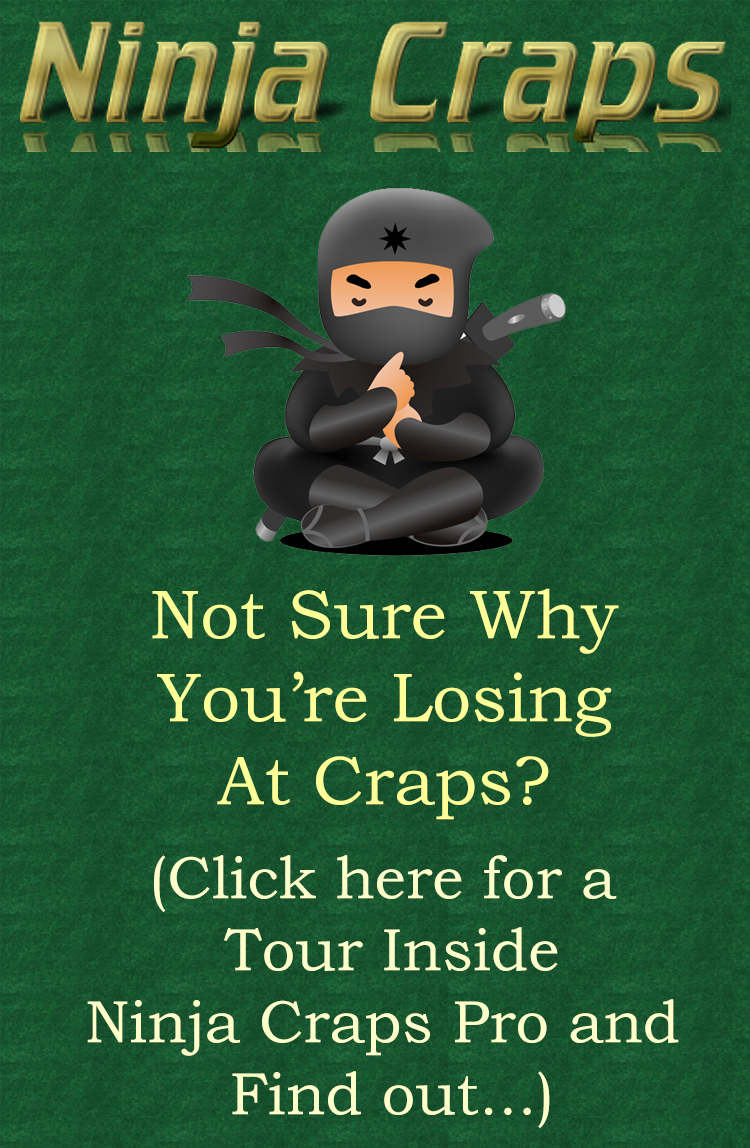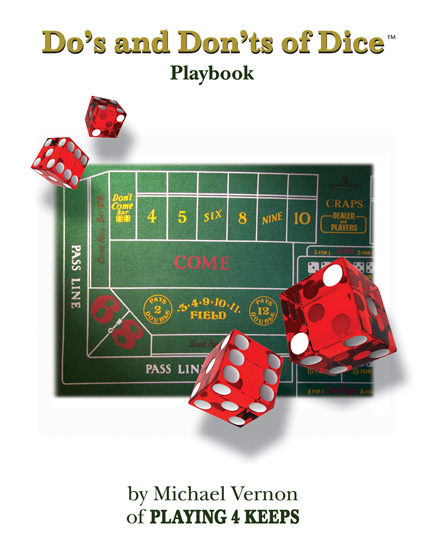|
Head for the Gap!
BY: Michael Vernon
In the final year of producing Stuart Wilde's Warriors in the Mist eight-day seminar, a small group of Irish attended on of the programs. They were a fun loving group and they loved their grog. After the last campaign, Stuart, my wife Lin, a few others in the production company and myself, flew over to the U.K. for a few weeks vacation. We spent five days in Ireland with our Irish friends. They had this funny little saying when driving drunk, "Head for the gap". I found out by experience that it meant to keep the car on the road by aiming it between the hedgerows and rock walls. Otherwise, the distance between certain other objects that would result in a crash, if the car were not maintained in the gap. I just found out that this Irish phenomenon is common to the game of craps.
In the past month, I have had numerous email dialogs with Mike In Hawaii. We have been discussing the math of the game and how the house edge on bets insures the casino's win. We also got into looking at the random game of dice, and how "monster hands" come about. One thing led to another and the question of how to explain a "monster hand" with math became Mike's quest. Can math explain the random monster hand?
The article that follows in this newsletter, written by Mike In Hawaii, may well be the most important study for dice in our time. I'd even say that it has broader application for all gambling in general. Yeah, that is a pretty big check to cash! Understanding Mike's computer model, his study of probability, has caused me more excitement, thought provoking inspiration and a much deeper understanding of what I have been teaching about the game of dice. I feel that his math model allows for an explanation for those places that I say a player is able to touch into with their perception. That is, the pushing out with one's feelings and being able to glean information from another dimension before it manifests in this reality. "Reading the energy!" Now I add a new description calling it "touching into the Gap". I will let Mike's article explain how it all comes about as you can read it for yourself below.
What I want to interject here is that I now feel confident that the energy concepts, the metaphysical concepts for gaming can be better understood in Mike's study. It is quantum physics at work and once you read Mike's article, my guess is that you will understand in simpler terms what I often have referred to as, "the dice acting out of probability".
Mike's study produced information revealing how the math of the game does adhere to probability over hundreds of thousands of rolls. What surprised us was that even though probability is held up, as one would expect, there are numerous "gaps" in random generated numbers where the dice rolls do not adhere to probability. It is during these gaps that the monster rolls are explained. Mike calls it "Distance Between Sevens".
What his study revealed is that the numbers rolled, do in fact adhere to mathematical probability. What he discovered by running over 600,000 random rolls, was there are numerous gaps between sevens occurring in the trial. That is to say, instead of a seven showing up every three to six rolls, there are times when there may be a distance between sevens up to over 60 rolls between their occurrences. Even though a lot of the gaps are less, even those gap hands would still be consider "out of probability" and profitable hands in terms of an opportunity to make money.
I am making a connection here to those aspects of what I have been writing about, perception and reading the energy. I believe that when a player is aligned to the energy, and perceives the "positive vibes" of a winning game, that they are in fact experiencing a quantum physical phenomenon. Mike likes to joke calling it "juju". I believe that the energy or intention sent out by a person can touch into the energy of a game and in doing so, is also able to perceive the experience of the gap. That is saying, with perception and awareness of other dimensions, a player is able to recognize the occurrence of the inordinate distance between sevens. So, when the player engages this kind of energy, they have positioned themselves in a game about to act out of probability. When they are switched on and perceive correctly, they find them selves playing in a profiting game. The other side of the experience is when pushing out with perception and not picking up a feeling for a positive game, the player is touching into a game adhering to probability. No Gap! It is what I refer to as "no game" and one would witness random rolls or a choppy game.
Though Mike has yet to run the trials to study the possible affects of dice influencing, I am prepared to propose that when a player rolls a hand using dice influencing, that are doing nothing more than hitting the "gaps" that are mathematically prevalent as demonstrated in Mike's study of over 600,000 random rolls. For me, it explains "why" dice setting works great some times and other times it is not different from random.
What I say next is bound to create controversy within the dice influencing community. There is a guard secret about dice control captured in slow motion. I am aware of three separate recordings, independent of one another, of slow motion filming of dice setter's dice in action. Mike has witnessed the film and agrees with what I am aware of for the way that dice react upon landing. I have had it explained to me by trusted authority, two experts of the game, each performing independent slow motion filming, that when the dice land after being tossed by skilled dice influencers, that the dice "bounce all over hell" time and again. Even with desired results, the results occurred randomly and did not adhere to the axis theory commonly held. I say again, no way do the dice tumble on axis, as is the accepted theory of today's dice setters. The sharp edges of a die are too unlikely to land flat, consistently, without catching the felt on edge or by a sharp corner and abruptly changing trajectory. Thus, the dice are not able to maintain the desired axis, which is professed by those believing the theory of dice influencing. That theory is that the dice land perfectly flat, maintain the true forward motion, rebound off the back wall of pyramid rubber and return to the layout and stop on the set axis. Near perfect cubes with razor edges, how is that practical? Mike is working on the model now and hopefully an answer is coming to you soon.
Okay, I wanted to keep my explanation of the math, metaphysics and quantum physics low keyed and simple. So, for now, I will leave it to you to decide for yourself. Review the findings in Mike's study. Consider this, if it is possible to touch into another dimension and perceive the energy in the future prior to its manifesting in this reality, can you perceive the energy of the distance between sevens. Can you head for the Gap?
Click Here to return to the list of prior articles ...
|
 |










